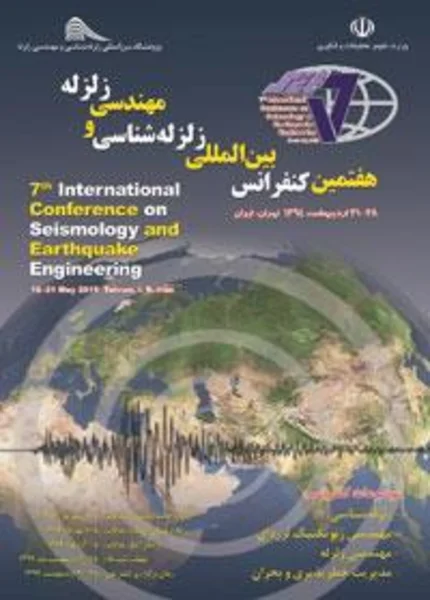-
dynamic stability ofa bio-inspired tensegrity structural module
جزئیات بیشتر مقاله- تاریخ ارائه: 1394/02/01
- تاریخ انتشار در تی پی بین: 1394/02/01
- تعداد بازدید: 668
- تعداد پرسش و پاسخ ها: 0
- شماره تماس دبیرخانه رویداد: -
evolution has been the nature’s solution to the survival issues of living creatures in direct response to their living environment in which physical forces are dominant. the investigation of bio-forms and how these forms are structurally stable and equilibrated, reveal the fact that life utilises tensegrity systems for its physical and mechanical incarnation. according to the literature, a tensegrity system is a tensionally integrated medium which comprises of a continuous set of tensile elements (or cables) supported by a discontinuous set of compressive elements (or struts). a tensegrity structure is stabilised by the sets of selfstressesborne in its elements. ever since the tensegrity structures’ concept was proposed and patented, major research attempts have performed on static stability, form-finding and structural behaviour of this type of structures. recently in some limited works, the dynamic characteristics and analyses of tensegrity structures have been discussed. these studies state some proposed analytical formulations for general dynamic characteristics and response of tensegrity structures of which form-finding process is done beforehand and the static self-stress set is determined and accepted as the design self-stress set during the dynamic analyses. in the present work the tissue structure has been opted representing the proposed tensegrity structural biomimicry. a tissue context has a hierarchical formation in which cells’ cytoskeletons are its space-filler building blocks. cytoskeleton is a structural unit composed of filamentous biopolymers that mechanically stabilises the cell and actively generates self-stresses resisted by external adhesive tethers to the extracellular matrix or fascia. the fascia is a purely tensile network whose duty is binding the structural blocks, filaments and other hierarchical formations in the tissue and integrating its structural behaviour. thus, cytoskeletons and fascia form a synergetic tensegrity system. this paper aims to investigate the dynamic stability of the proposed fascia-cytoskeleton tensegrity system under earthquake loading considering the self-stress set and connectivity as dynamic variables. in this regard, optimisation techniques are applied in the tensegrity dynamic analyses to trace its equilibrium at discrete time steps. the results include optimum connectivity and self-stress set for the tensegrity system. the final outcome of the optimised dynamic stability analyses is a tissue-mimicedtensegrity structural component and the initial dynamic design self-stress set which satisfies the equilibrium, stability and limit constraints during the time span in which the design dynamic loading is exerted on the structure.
مقالات جدیدترین رویدادها
-
استفاده از تحلیل اهمیت-عملکرد در ارائه الگوی مدیریت خلاقیت سازمانی و ارائه راهکار جهت بهبود
-
بررسی تاثیر ارزش وجوه نقد مازاد بر ساختار سرمایه شرکت های پذیرفته شده در بورس اوراق بهادار تهران
-
بررسی تأثیر سطح افشای ریسک بر قرارداد بدهی شرکت های پذیرفته شده در بورس اوراق بهادار تهران
-
بررسی تأثیر رتبه بندی اعتباری مبتنی بر مدل امتیاز بازار نوظهور بر نقد شوندگی سهام با تأکید بر خصوصی سازی شرکت ها
-
تأثیر آمیخته بازاریابی پوشاک ایرانی بر تصویر ذهنی مشتری پوشاک ایرانی (هاکوپیان)
-
بررسی آزمایشگاهی استفاده از الیاف پلی پروپیلن در مخلوط های آسفالتی
-
بررسی پارامترهای بهینه میراگر پاندولی در سازه های با ارتفاع های مختلف تحت مؤلفه های جانبی و قائم بارهای لرزه ای
-
بررسی اثربخشی سبک رهبری تحول آفرین در سازمان
-
بررسی عددی انتقال حرارت جابجایی جریان آرام در لوله مستقیم با قطر متفاوت تحت اثر نانوسیال
-
استفاده از مدل عددی cche2d در بررسی تاثیر آستانه بر رسوب ورودی به کانال آبگیر با زوایای مختلف آبگیری
مقالات جدیدترین ژورنال ها
-
مدیریت و بررسی افسردگی دانش آموزان دختر مقطع متوسطه دوم در دروان کرونا در شهرستان دزفول
-
مدیریت و بررسی خرد سیاسی در اندیشه ی فردوسی در ادب ایران
-
واکاوی و مدیریت توصیفی قلمدان(جاکلیدی)ضریح در موزه آستان قدس رضوی
-
بررسی تاثیر خلاقیت، دانش و انگیزه کارکنان بر پیشنهادات نوآورانه کارکنان ( مورد مطالعه: هتل های 3 و 4 ستاره استان کرمان)
-
بررسی تاثیر کیفیت سیستم های اطلاعاتی بر تصمیم گیری موفق در شرکتهای تولیدی استان اصفهان (مورد مطالعه: مدیران شرکتهای تولیدی استان اصفهان)
-
ماهیت حقوقی و مسئولیت کیفری اعمال مجرمانه مجانین و دیوانگان
-
تفاوت معنایی سه واژه «لفظ»، «کلمه» و «قول» با توجه به استعمال آنها در آیات
-
تأثیر و تأثراتِ تعاملاتِ اجتماعی بر خلقِ مکان در معماری اسلامی
-
بررسی تاثیر فاکتورهای موثر طراحی سبز در شکل گیری بیمارستان های سبز
-
مدلی برای سنجش اثربخشی خدمات عمومی (آزمونی در بیمارستان های دولتی)




سوال خود را در مورد این مقاله مطرح نمایید :